A New Year message form Yasuo Arai, President of IAIN
During the past year, the evolution of remotely piloted or entirely autonomous vehicles has proceeded apace and, as we discovered during our Congress in October, there continues to be a huge amount of effort being expended in academia and other research fora in developing new, multi-sensor navigational techniques and, especially, ever more clever processing of GNSS signals in order to solve the growing demands for determining a vehicle’s very precise position but, it seems, comparatively little work on alternatives to GNSS.
Around the world, this year-end has been marked by extreme weather events, some of which have been ascribed to the effects of climate change and some to the El Niño phenomenon. What if there had also been an extreme space weather event – a solar coronal mass ejection towards Earth? How would all those autonomous, remotely piloted and, indeed, manned vehicles manage without GNSS? It is not just we navigators who need a back-up. What about financial markets, power grids and communications networks? At the end of 2015 France and Norway will cease funding the eLORAN infrastructure in their territory thereby denying its use as a back up to GNSS in NW Europe. At the same time the US Army and US Department of Transportation have recently expressed renewed interest in an alternative positioning, navigation and timing system and the Republic of Korea is vigorously pursuing the development of one. Furthermore, the United States Navy is reintroducing training in astro-navigation for its personnel as it recognizes that there is a need to have a fall back method of determining position in the event of GNSS denial for whatever reason.
Several of the presentations at Congress introduced yet more proposals for systems that purport to assist the human operators of traditional craft and particularly marine vessels. But, however sophisticated such systems are, they are generally disincentives to the operator to look out – still the primary method by which we humans generate local situational awareness. All types of manned, remotely piloted and autonomous vehicles need to ‘look out’ by means of one, or more, sensors in order to avoid conflict with other vehicles and specifically, if they are to be permitted to operate amongst manned vehicles, traffic such as airliners and marine craft, not to mention pedestrians!
It is to be hoped that 2016 will be the year when researchers, commerce and the regulators will focus on solving the twin challenges of identifying or developing: first, truly viable alternative navigation systems independent of space with seamless and responsive communication and/or data exchanges, fully able to function wherever required, including indoors, underground and underwater, and to provide the necessary GNSS back-up capability to provide Positioning, Navigation and Timing; and, secondly, multi-sensor suites that will enhance every vehicle’s capacity to be fully aware of its situation in relation to both its physical environment and other users of that environment.
We wish a happy, successful and safe New Year to all our Members and readers.
 Yasuo Arai,
Yasuo Arai,
(Japan Institute of Navigation)
President IAIN
A New Year message
We wish a happy, successful and safe New Year to all our Members and readers.
Available here is the New Year message from Yasuo Arai of the Japan Institute of Navigation, President of IAIN.
ORBCOMM second mission completes OG2 constellation
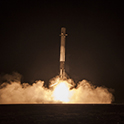
It was reported on 21 December by ORBCOMM Inc from Rochelle Park, New Jersey, that it had successfully launched eleven next generation OG2 satellites from Cape Canaveral Air Force Station, Florida at 2029 ET that day. These eleven satellites were successfully separated from the Falcon 9 launch vehicle into the proper insertion orbit.
After an initial health check, the satellites will undergo extensive In-Orbit Testing (IOT) to verify that all subsystems are properly functioning. The satellites are expected to be providing full commercial M2M messaging and
Automatic Identification System (AIS) services within the next 60 days.
Bureau Veritas’ international pilotage certification to Port of Cork
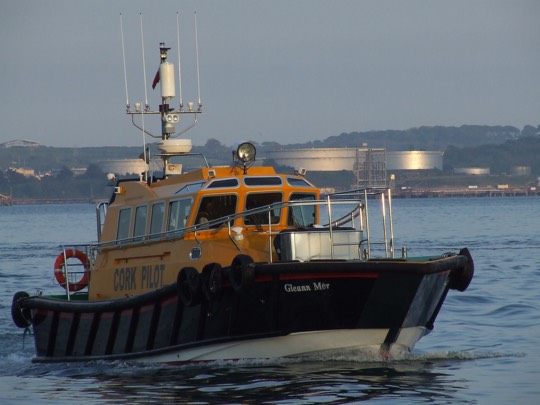
Classification society Bureau Veritas has issued its first certificate under the ISPO (International Standard for Maritime Pilot Organizations) standard of best practice for pilots and pilot organizations to the pilotage authority, the Port of Cork, Ireland.
The ISPO certification covers the pilotage services and Vessel Traffic Management System. It is an accessible industry specific standard, managed by a group of users, that improves safety and quality and provides transparency to ship owners and stakeholders on pilotage standards.
The ISPO certification for the Port of Cork covers twelve pilots who safely managed mixed marine traffic handling over 9 million tonnes of cargo and 56 cruise ship calls during 2015.
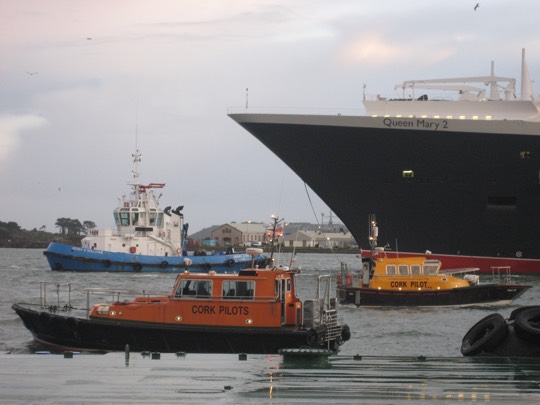
Captain Alfred Norman Cockcroft †

CAPTAIN ALFRED NORMAN COCKCROFT, Extra Master, M.Phil., FRIN, FNI
21 March 1930 – 8 December 2015
Captain Cockcroft became a Member of the Royal Institute of Navigation (RIN) in 1963 and was awarded a Fellowship in 1976 (FRIN). He was awarded the Institute’s Bronze Medal, for the Journal of Navigation’s best paper, as well as the Gold Medal in 1982. In the period until the late 1990s within RIN he became Chairman of the Marine Traffic and Navigation Group, was a member of Council and of the Technical Committee, served as Vice-President and represented the Institute on the UK Safety of Navigation Committee. He also represented the International Association of Institutes of Navigation (IAIN) at the International Maritime Organization (IMO), was a Visiting Professor at the IMO World Maritime University and became an IMO consultant on ship routeing projects.
Norman Cockcroft had Parkinson’s disease in his later years and passed away at the age of 85 on 8 December 2015. His wife Janice, with whom he had two sons and two daughters, predeceased him by six weeks.
SeaRobotics will manufacture Lockheed Martin’s commercial deepwater AUV
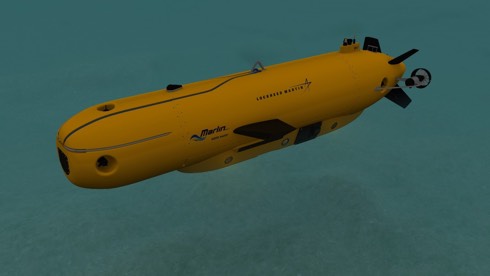
It was announced from Palm Beach, Florida, on 14 December that Lockheed Martin has selected SeaRobotics Corporation as the Original Equipment Manufacturer (OEM) for its Marlin® Mk3 Autonomous Underwater Vehicle (AUV) designed for survey and inspection applications in depths up to 4,000 metres.
Designed for deepwater applications such as pipeline inspection, deepwater survey, and life of field support services for oil and gas, the Marlin® Mk3’s modular, plug and play mission package architecture and dual AUV/Remote Operated Vehicle propulsion modes is a revolution in AUV technology that can perform a wide range of deepwater geophysical survey and structural integrity management inspection operations.
12th ISIS-MTE 2016 call for papers
A Call for Papers has been issued for the 12th International Symposium on Integrated Ship’s Information Systems (ISIS) & Maritime Traffic Engineering Conference organised by the German Institute of Navigation, Deutsche Gesellschaft für Ortung und Navigation e. V. (DGON), in co-operation with the Maritime University of Sczcecin, Poland.
Abstracts to be submitted by 15 April 2016.
Integrated Ship’s Information Systems (ISIS) are recognized to be the effective means to enhance safety and efficiency of maritime traffic systems. They are used, for example, in ships, in vessel traffic services as well at fleet service centres to analyse situations, improve awareness, support decision making and the management processes.
ISIS will be an excellent platform to present advanced approaches for Green
Navigation and Unmanned Ships as well as for further future concepts. More information here.
NTSB completes
documentation of sunken
cargo ship El Faro

It was announced in mid-November from Washington by the National Transportation Safety Board (NTSB) that video documentation of the cargo ship El Faro and the associated debris field has been completed but the vessel’s voyage data recorder has not been located.
Despite locating the ship on October 30 and locating the missing navigation bridge on November 11, after searching for five more days using CURV-21, a remotely operated vehicle, it was determined that the VDR could not be located. The search and video documentation efforts of El Faro were completed on 15 November. No further search missions are planned, it is understood.
IMO Council elections

The elections for the 40-member executive Council of the International Maritime Organization (IMO) for the next biennium (2016-2017) took place on 27 November 2015, as part of the regular biennial session of the IMO Assembly (29th session, 23 November-2 December 2015).
IMO Council elections

The elections for the 40-member executive Council of the International Maritime Organization (IMO) for the next biennium (2016-2017) took place on 27 November 2015, as part of the regular biennial session of the IMO Assembly (29th session, 23 November-2 December 2015).
Enhanced Loran trials discontinued
Trinity House, the General Lighthouse Authority for England, Wales and the Channel Islands, have given notice that from 1100 UTC on 31 December 2015, it will discontinue the Initial Operational Capability (IOC) prototype/trials of Enhanced LORAN (eLORAN) in the waters of the United Kingdom and Ireland.
Mariners have been advised that from 1100 UTC on 31 December 2015 all currently equipped eLORAN and LORAN-C receivers in northwest Europe will cease to function correctly and such receivers should be switched off until further notice.
Sites to watch
News has been received from Frank W Fischer, President of ANSA, that the organisation has published an electronic version of Part II of its documentation on the development of air navigation in Germany between 1945 and 1955 in English.
This is available on the internet for reading only and is to be found on the website of the US Air Force Communicators and Air Traffic Controllers’ Association (AACS) here.

Furthermore it is understood that ANSA recently published an electronic version of the AACS story (1938 to 1947) Highways in the Sky by Louis Shores, written in 1947. This is available for free download from ANSAs website at luftfahrt-bibliothek.de.
December 7: International
Civil Aviation Day
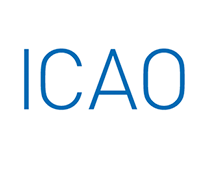
Under ICAO Assembly Resolution A29-1 the date of 7 December was officially declared as International Civil Aviation Day (ICAD).
The purpose of this annual celebration is to establish and reinforce global awareness of the importance of international civil aviation to the social and economic development of States and the general fostering of international connectivity, peace and prosperity.
Council determined that a single ICAD theme would be established covering the full four-year period in between ICAO anniversary years. In line with this decision, Council approved “Working Together to Ensure No Country is Left Behind” as the theme to be celebrated by States for the period 2015-2018 inclusive.
European Space Solutions: Bringing space to earth
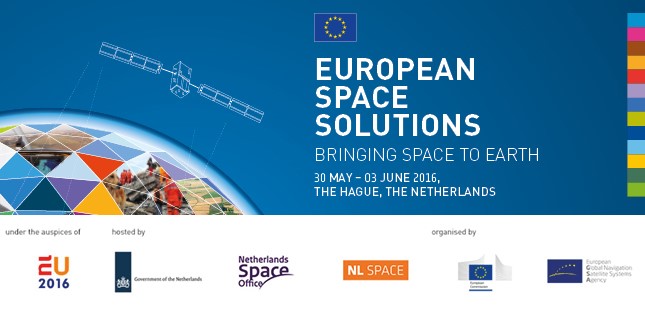
The fourth of a serious of European Space Solutions.
Space-based services and technologies are the future of efficient, effective and sustainable solutions that society needs to meet today’s tough challenges.
Under the auspices of the 2016 Dutch Presidency of the European Council, this major five-day conference will be held in The Hague. It is understood that a wide range of applications, services and current developments will be presented.
First ICAO World Aviation Forum
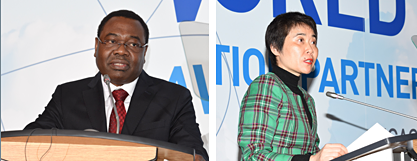
The International Civil Aviation Organization (ICAO) convened the first-ever World Aviation Forum (IWAF) with the theme: Aviation Partnerships for Sustainable Development, from 23 to 25 November 2015 in Montréal. The IWAF was attended by over 800 participants representing ICAO Member States, international organizations, financial institutions and the industry sector.
IWAF participants came together to help maximize opportunities for enhancing global aviation. They strongly supported the Organization’s No Country Left Behind (NCLB) campaign to assist States in implementing ICAO Standards and Recommended Practices (SARPs).
Report on the 10th ICG meeting

The 10th Meeting of the International Committee on GNSS (ICG) was held in Boulder, Colorado, USA from 1 to 6 November 2015 to continue reviewing and discussing developments in global navigation satellite systems (GNSS) and to allow ICG members, associate members, and observers to address recent developments in their organizations and associations with regard to GNSS services and applications.
The meeting was organized by the Government of the United States. IAIN was
represented by Krzysztof Czaplewski (PNF).

MacGregor substructure connection mooring system
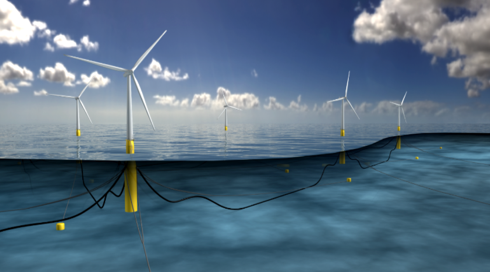
MacGregor, part of Cargotec, announced on 27 November that it had won an order for substructure connection mooring systems for the world’s first floating offshore wind farm: Statoil’s Hywind pilot park in Scottish waters.
MacGregor will be responsible for the delivery of the Pusnes substructure mooring connection system for the pilot project’s five floating wind turbines. Delivery of equipment is planned from the second through to the fourth quarter of 2016 and installation of the wind turbines is scheduled for 2017.
Mr Kitack Lim confirmed as IMO Secretay General
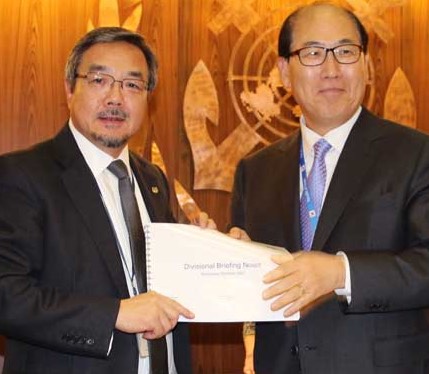
The IMO Assembly has unanimously endorsed the appointment of Mr Kitack Lim (Republic of Korea) as the Secretary-General of the International Maritime Organization (IMO), with effect from 1 January 2016, for an initial term of four years.
Mr Lim was president of Busan Port Authority (until the end of July 2015). He served as the Republic of Korea’s Deputy Permanent Representative to IMO from 2006 to 2009 and was Chairman of the Sub-Committee on Flag State Implementation (FSI) from 2002 to 2004.
Almarin’s Barcelona restoration
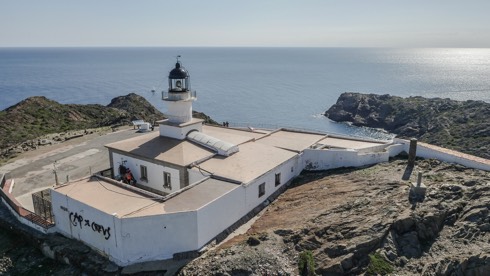
Almarin, a Spanish manufacturer of marine aids to navigation, has carried out the design, supply and installation of three lanterns for shore-based lights for the port of Barcelona following acceptance in May of a turnkey tender.
The first task was to renovate the lantern at Cap de Creus lighthouse, this marks the cape of the same name in Catalonia’s north east, the most easterly part of Spain.
This was followed by work on two others lights that mark the entrance to Barcelona’s port and here new lanterns were installed above new concrete towers designed by the port.
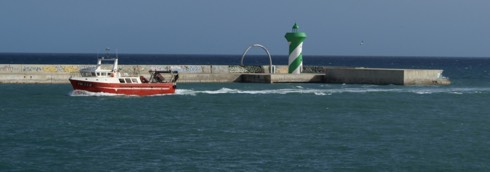
Third ICAO Air Transport symposium

The International Civil Aviation Organization (ICAO) will convene the third ICAO Air Transport Symposium (IATS 2016) with the theme Addressing Competition Issues: Towards a Better Operating Environment, in Montréal, Canada, on 30 and 31 March 2016.
The venue will be ICAO HQ, 999 Robert-Bourassa Boulevard, Montréal.
This symposium will serve as a forum for the exchange of views and information on competition issues amongst policy makers, air transport regulators, industry representatives, aviation professionals, competition law experts and other stakeholders. It will offer participants the opportunity to examine practical solutions to competition issues including, but not limited to, the role of government under the liberalized market, the application of competition rules to international air transport, aviation-specific safeguards, air connectivity and competitiveness in a liberalized market.
EERA DeepWind’2016

EERA DeepWind’2016 is the 13th Deep Sea Offshore Wind R&D Conference to be held in Trondheim, Norway.
Organized by the research parties in NOWITECH in cooperation with the European Energy Research Alliance (EERA) joint programme on wind energy and NORCOWE, this international event aims at presenting the best R&D on deep sea offshore wind farms, both bottom fixed and floating.
HYPACK 2016

HYPACK 2016, 4-7 January, 2016, Tampa, Florida.
This gathering, the 23rd annual HYPACK USA Training Event, is an opportunity for delegates to receive training in the hydrographic software packages: HYPACK®, HYSWEEP® and DREDGEPACK®.
Comprehensive training for both novice and experienced users will be available, it is understood. HYPACK certified trainers and programmers will be present for one-on-one sessions, giving those attending the opportunity to discuss any project specific questions.
Twenty-five of the industry’s leading companies will be exhibiting at the HYPACK® 2016 Training Event.
Geospatial World Forum 2016
 Now the eighth in a series, Geospatial World Forum has proved popular with professionals engaged in the geospatial sector and its application domain. It is said to be a premium global platform for the geospatial community offering opportunities for learning, sharing, branding and networking with senior decision makers within the geospatial world. According to material received this conference aims to provide market intelligence, technology trends, success stories and capacity building.
Now the eighth in a series, Geospatial World Forum has proved popular with professionals engaged in the geospatial sector and its application domain. It is said to be a premium global platform for the geospatial community offering opportunities for learning, sharing, branding and networking with senior decision makers within the geospatial world. According to material received this conference aims to provide market intelligence, technology trends, success stories and capacity building.
Guarant’s report on IWC 2015
Regarding IAIN’s 15th World Congress held in Prague, Czech Republic, from 20 to 23 October 2015 Pavla Kozáková, Project Manager of the organisers GUARANT International, has now produced a final report which includes details on participants, representation per country, registration timetable, the list of keynote speakers with their topics, events and more.
Radio spectrum allocated for global flight tracking
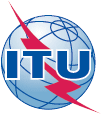 It was announced from ITU in Geneva on 11 November that agreement has been reached at the World Radiocommunication Conference held in the city on the allocation of radiofrequency spectrum for global flight tracking in civil aviation. The frequency band 1087.7-1092.3 MHz has been allocated to the aeronautical mobile-satellite service (Earth-to-space) for reception by space stations of Automatic Dependent Surveillance-Broadcast (ADS-B) emissions from aircraft transmitters.
It was announced from ITU in Geneva on 11 November that agreement has been reached at the World Radiocommunication Conference held in the city on the allocation of radiofrequency spectrum for global flight tracking in civil aviation. The frequency band 1087.7-1092.3 MHz has been allocated to the aeronautical mobile-satellite service (Earth-to-space) for reception by space stations of Automatic Dependent Surveillance-Broadcast (ADS-B) emissions from aircraft transmitters.
This [agreement between ICAO and ITU, ed.] follows the disappearance and tragic loss of Malaysian Airlines Flight MH370 in March 2014 with 239 people on board, which spurred worldwide discussions on global flight tracking and the need for coordinated action by ITU and other relevant organizations.
